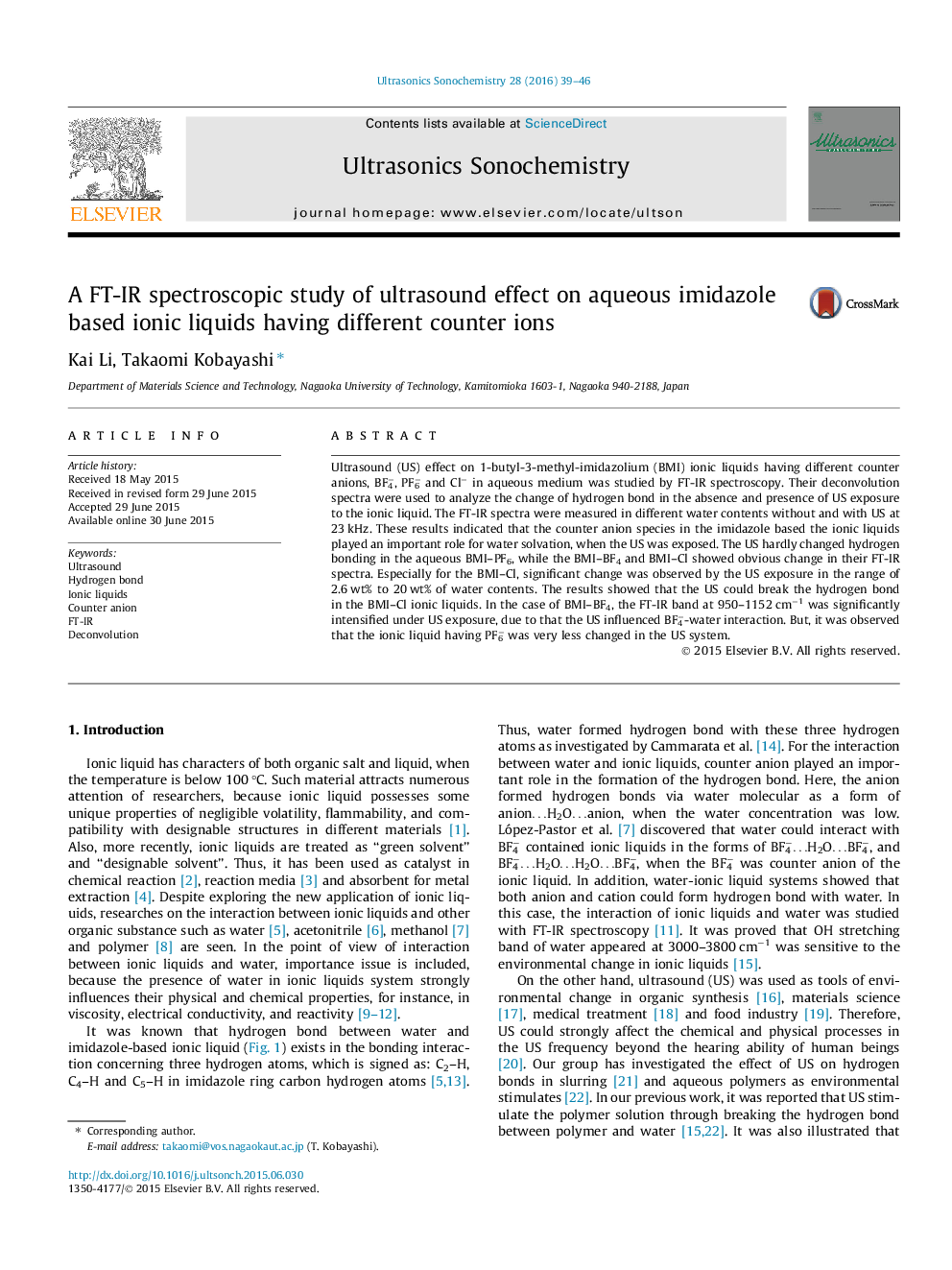| Article ID | Journal | Published Year | Pages | File Type |
|---|---|---|---|---|
| 1266538 | Ultrasonics Sonochemistry | 2016 | 8 Pages |
•US effect on the aqueous imidazole-based ionic liquids having different counter anions was studies by FT-IR spectroscopy.•The observed FT-IR spectra showed that US effect on the ionic liquids was dependent on counter anions.•US could break the hydrogen bond in the aqueous BMI–Cl and BMI–BF4, while no change was observed for the aqueous BMI–PF6.
Ultrasound (US) effect on 1-butyl-3-methyl-imidazolium (BMI) ionic liquids having different counter anions, BF4−, PF6− and Cl− in aqueous medium was studied by FT-IR spectroscopy. Their deconvolution spectra were used to analyze the change of hydrogen bond in the absence and presence of US exposure to the ionic liquid. The FT-IR spectra were measured in different water contents without and with US at 23 kHz. These results indicated that the counter anion species in the imidazole based the ionic liquids played an important role for water solvation, when the US was exposed. The US hardly changed hydrogen bonding in the aqueous BMI–PF6, while the BMI–BF4 and BMI–Cl showed obvious change in their FT-IR spectra. Especially for the BMI–Cl, significant change was observed by the US exposure in the range of 2.6 wt% to 20 wt% of water contents. The results showed that the US could break the hydrogen bond in the BMI–Cl ionic liquids. In the case of BMI–BF4, the FT-IR band at 950–1152 cm−1 was significantly intensified under US exposure, due to that the US influenced BF4−-water interaction. But, it was observed that the ionic liquid having PF6− was very less changed in the US system.
